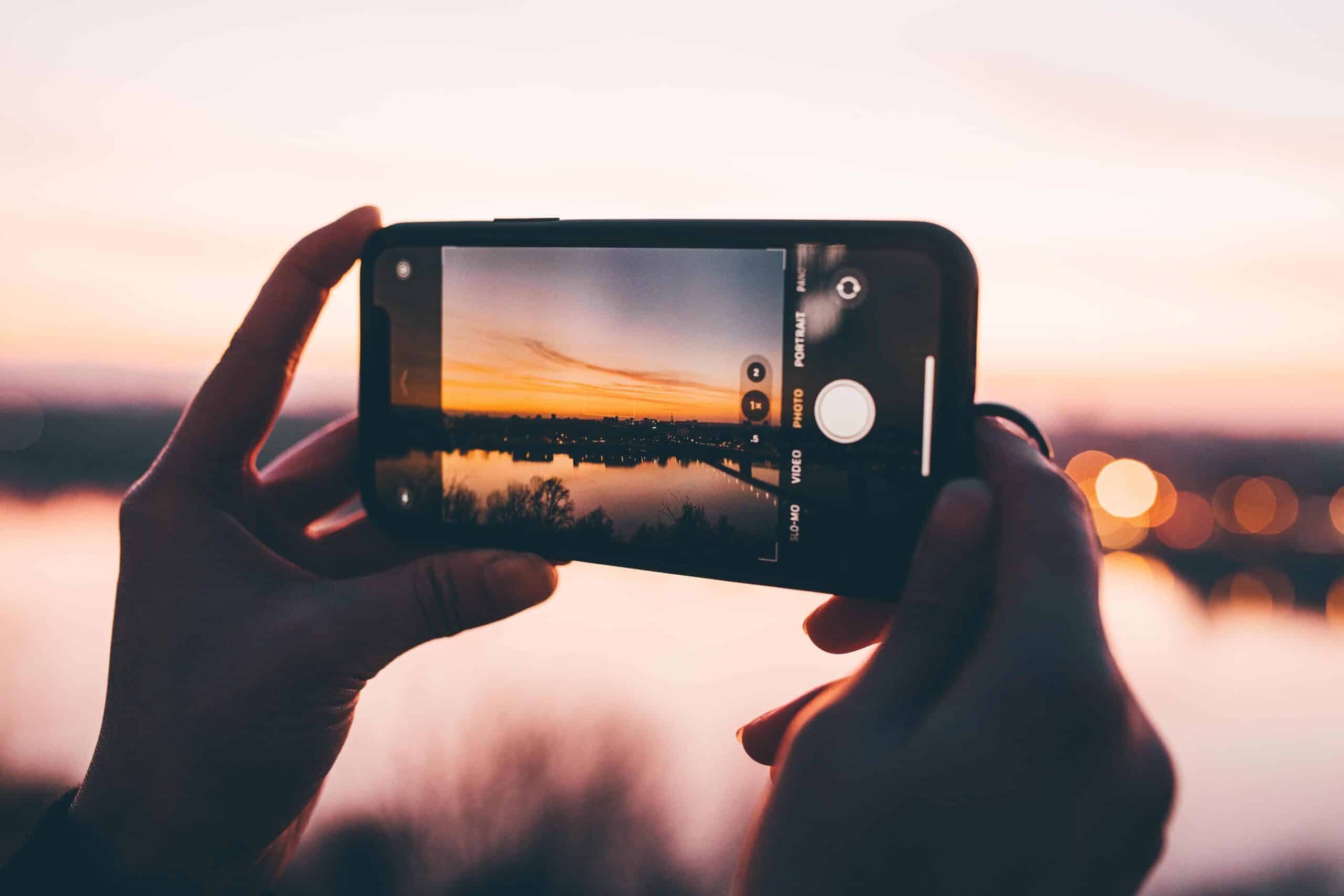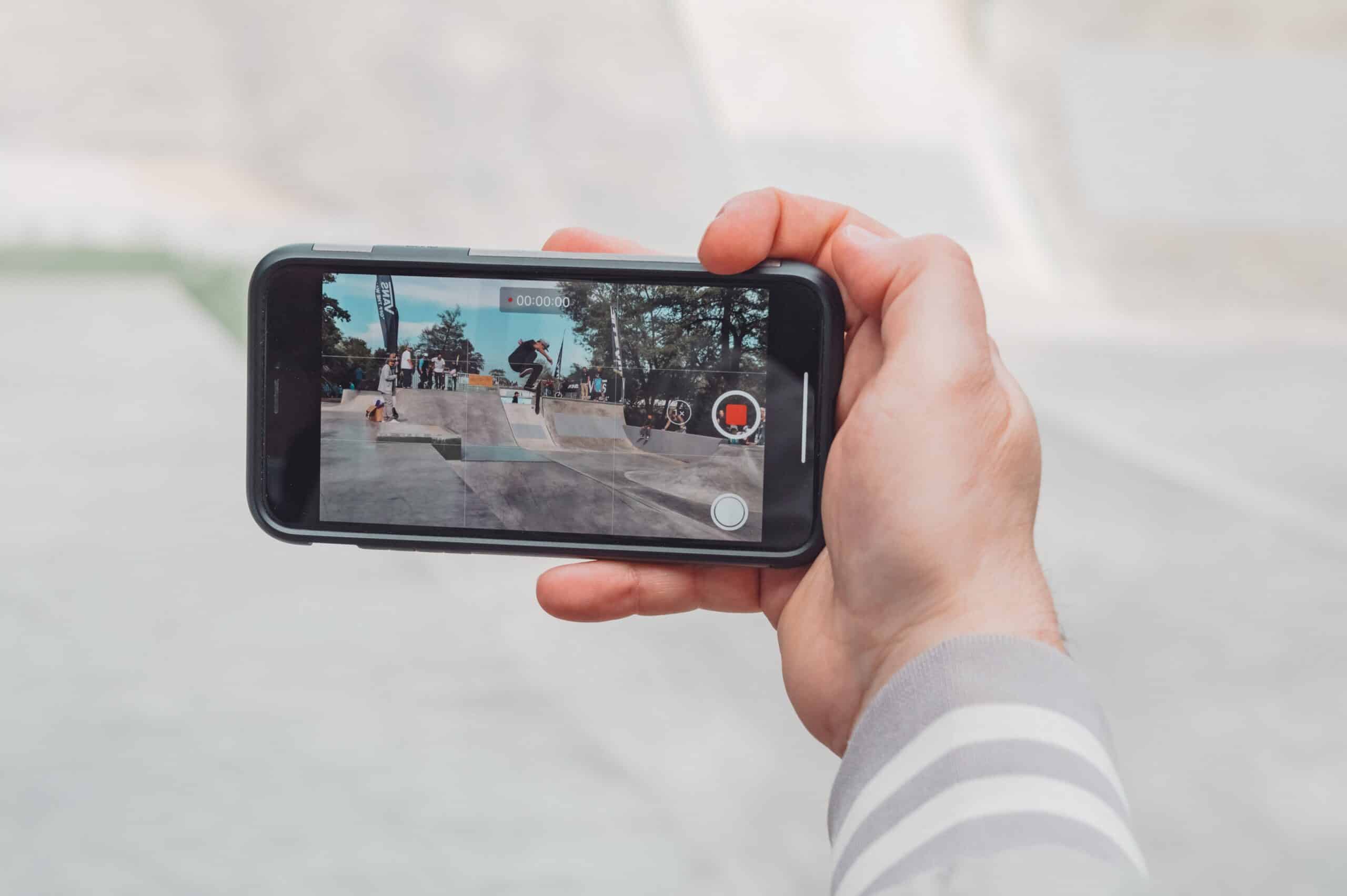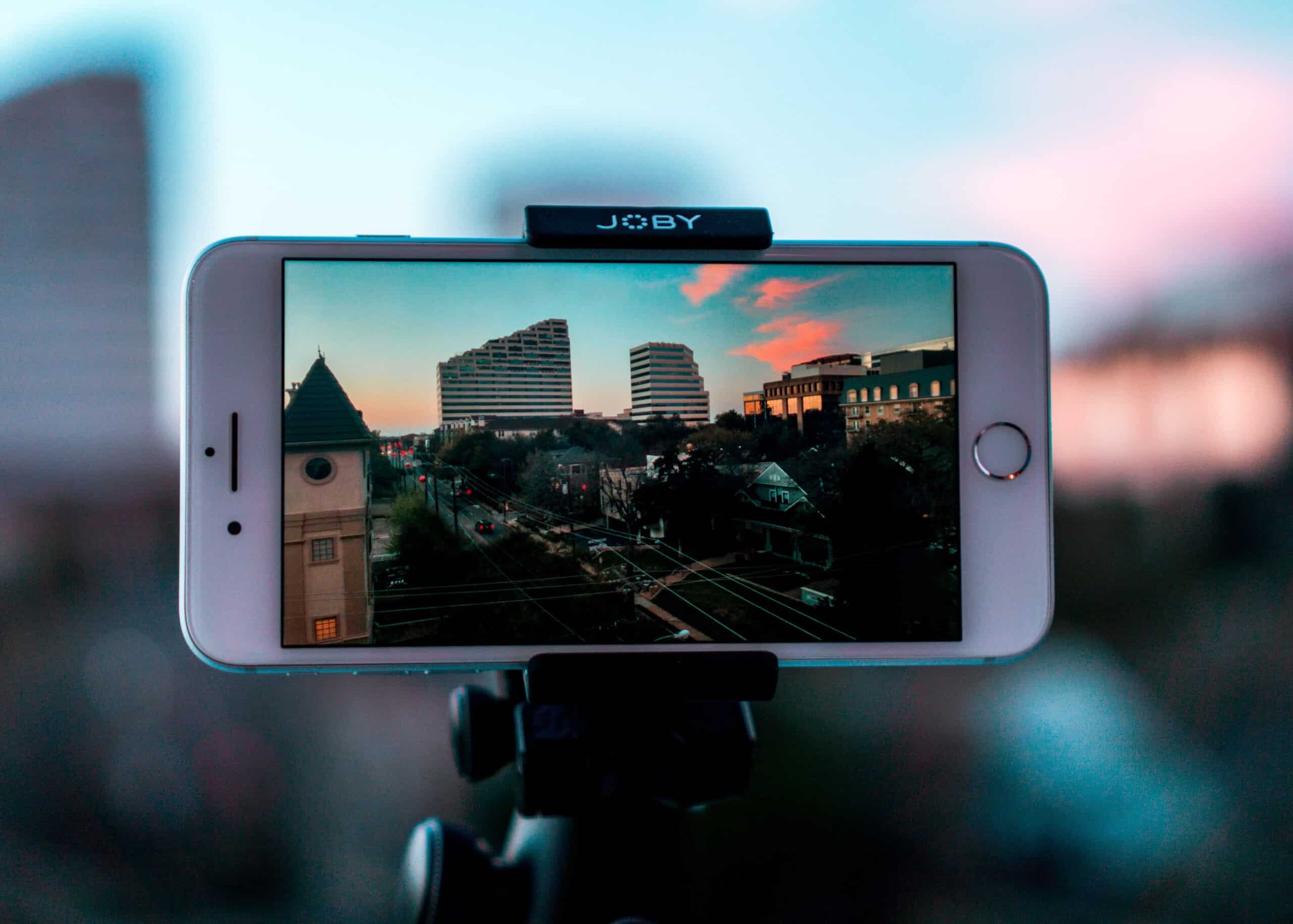This National Photography Month, we are sharing some of our top phone photography tips to help you maximise your content creation in a budget-friendly and convenient way.
In an ever-expanding digital world, visual media has become more important than ever to stay up-to-date with trends and competitors. Many of us shy away from visual content due to its often-expensive price tag. However, thanks to developing technologies such as the mobile phone, capturing imagery has become more accessible and more affordable than ever. Increased technological capabilities mean you do not need to learn how to use a DSLR camera to produce outstanding photos. Instead, you can use a modern smartphone that will provide high-quality content at a significantly lower price.
First, find our equipment recommendations to make the most of your photography budget in a few easy steps.
Modern Smart Phone
When utilised correctly, most modern-day phones can capture at least 12mp imagery and higher. Consider using higher-quality imagery for your website, but a phone will provide all you need for use on social media and other digital channels.
Tripod and Gimbal
Tripods and gimbals are handy for keeping the camera stable. These tools are convenient when shooting a moving subject to ensure the footage is steady and focused on providing a good viewing experience for the audience.
Never Underestimate the Importance of Good Lighting
Natural light can be used but is unpredictable and uncontrollable, so we recommend using artificial lighting and/or reflectors, depending on the content you are creating. Good lighting makes your imagery stand out and can be used to spark creativity in your projects.

Once you are familiar with your equipment, knowing how to use these tools effectively is essential. Our top tips will ensure that your content will stand out from competitors.
- Clean your camera lens before every shoot
Your phone camera picks up dirt and dust, ultimately affecting the quality of your capture.
- Turn the flash off when photographing
Depending on the type of content you are capturing, using the flash can create an artificial effect by illuminating natural shadows and creating harsh lighting.
- Enable the grid lines feature
Grid lines will let you see if your image is aligned vertically to avoid additional time during post-production. Using the rule of thirds framing technique will enable you to capture visually pleasing content.
- Shoot in landscape, not portrait
Landscape filming allows you to do more with your footage when distributing it across multiple platforms. Be mindful of dimensions and future-proof your footage.
- Set your focus point
Tap on your subject on the screen to focus. Slide up or down to adjust the exposure accordingly and ensure your footage isn’t too dark or overexposed and bleached out.
- Avoid zooming in
Capturing a wide-angle shot and cropping in during post-production is much better than zooming in while filming. When you pinch to zoom, you immediately reduce the image’s resolution, making the image low-quality and grainy.
- Plan and prepare
It is best practice to conduct test shoots and ensure you have shot lists or storyboards prepared to maximise your shoot time and capture all you need in one go.
- Keep the camera steady
Avoid motion blur using equipment such as a gimbal or tripod to ensure your photos are clear and stable. Keep the camera as steady as possible if you’re holding the camera by hand.
- Take multiple shots
This point is crucial when photographing people as the subject. Taking multiple shots ensures you have many backup options and avoids additional time spent in reshoots.
- Acquire signed consent
Anyone featured in your imagery must have first signed consent forms regarding the use of the photography or video. If you do not have permission, you cannot publish the content.

Once you have captured your photos, it is essential to distribute them correctly. When uploading imagery to your website, you should compress the image size to ensure your page loading time stays low, ultimately safeguarding your SEO. You can use websites such as Squoosh to reduce image sizes. Follow best practice rules and optimise your content for accessibility by providing image alt text descriptors for visually impaired audiences using screen readers.
It is also important to remember that the content you create can be repurposed and reused across multiple digital or printed outlets. Consider opportunities to use your imagery across different campaigns and platforms to maximise the return on the time and resources invested.
At Mackman, we have in-house capabilities to offer photography and video production to increase your digital marketing efforts. If you require any photography or video training, contact us by emailing customerservice@mackmangroup.co.uk or calling 01787 388038.
